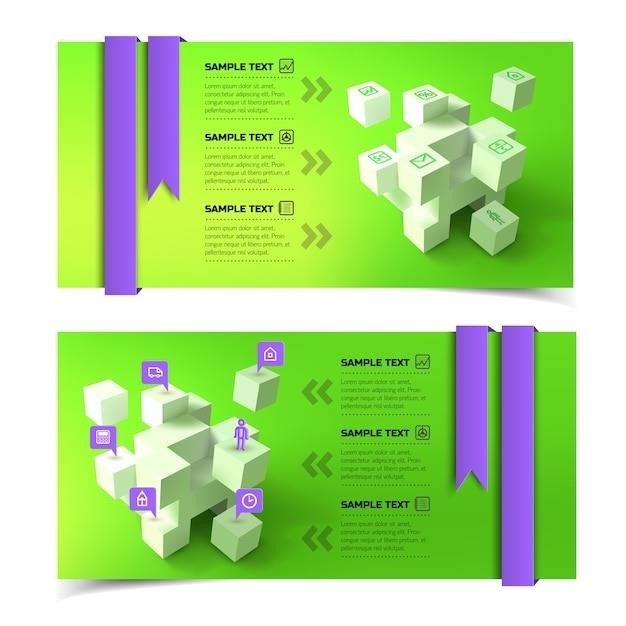
BlockSim⁚ A Comprehensive Guide
BlockSim is a powerful software tool that allows you to model and analyze the reliability, availability, and maintainability of complex systems. It provides a comprehensive platform for system reliability, availability, maintainability and related analyses, allowing you to model the most complex systems and processes using reliability block diagrams (RBDs), fault tree analysis (FTA), or Markov diagrams. BlockSim also supports a wide variety of system reliability, availability and related analyses using reliability block diagrams (RBDs), fault trees (FTA) and/or Markov analysis. It is packed with tools for related analyses, such as reliability allocation, optimum replacement and inspection, reliability importance measures and throughput analysis.
Introduction to BlockSim
BlockSim, developed by ReliaSoft, is a robust software tool designed for comprehensive system reliability, availability, and maintainability (RAM) analysis. It empowers engineers, designers, and asset managers to delve into the intricacies of system performance and predict its behavior under various conditions. BlockSim’s versatility shines in its ability to handle both repairable and non-repairable systems, catering to a wide range of applications. This powerful software serves as a valuable tool for both product designers and asset managers, enabling them to make informed decisions regarding system design, maintenance strategies, and risk mitigation.
BlockSim’s core strength lies in its ability to leverage both exact computations and discrete event simulation techniques. This dual approach provides a powerful analytical framework for gaining deep insights into system behavior. Exact computations offer precise mathematical solutions for simpler systems, while discrete event simulation excels in handling complex scenarios involving multiple components and intricate interactions. This flexibility allows users to choose the most appropriate method based on the specific needs of their analysis.
The software’s intuitive user interface makes it accessible to users with varying levels of expertise. Its comprehensive documentation, including user manuals, training guides, and online resources, further enhances its usability. BlockSim is an indispensable tool for organizations seeking to enhance product reliability, optimize system performance, and minimize downtime, ultimately leading to improved operational efficiency and reduced costs.
BlockSim Features and Capabilities
BlockSim offers a comprehensive suite of features and capabilities designed to empower users with a deep understanding of system reliability, availability, and maintainability. At its core, BlockSim excels in modeling complex systems and processes using three primary techniques⁚ reliability block diagrams (RBDs), fault tree analysis (FTA), and Markov diagrams. Each of these techniques provides a distinct perspective on system behavior, allowing users to choose the most appropriate approach based on their specific needs and the complexity of the system under analysis.
RBDs provide a visual representation of system structure, highlighting the interdependencies between components and their impact on overall system reliability. FTA, on the other hand, focuses on identifying potential failure modes and their root causes, allowing for proactive risk mitigation strategies. Markov diagrams, with their probabilistic approach, enable users to model systems with multiple states and transitions, offering insights into long-term system performance and reliability.
Beyond these core modeling techniques, BlockSim is equipped with a rich set of advanced features. These include capabilities for reliability allocation, which helps distribute reliability targets across system components, as well as tools for optimizing replacement and inspection schedules to minimize maintenance costs and maximize system uptime. Furthermore, BlockSim provides detailed reliability importance measures, enabling users to identify critical components that have the most significant impact on overall system reliability. The software also supports throughput analysis, allowing users to evaluate the efficiency of production systems and identify bottlenecks that can hinder overall performance.

BlockSim Applications
BlockSim’s versatility and comprehensive capabilities make it a valuable tool across a wide range of industries and applications. Its ability to model and analyze system reliability, availability, and maintainability has proven essential in various domains, including product design, asset management, and risk assessment. BlockSim is widely used by engineers, designers, and reliability professionals to ensure the robustness and resilience of complex systems.
In the realm of product design, BlockSim aids in identifying potential reliability issues early in the development cycle, allowing for proactive design modifications to enhance product durability and minimize field failures. This proactive approach not only reduces warranty costs but also enhances customer satisfaction by delivering more reliable products. Similarly, in asset management, BlockSim empowers organizations to optimize maintenance schedules, predict component failures, and minimize downtime, thereby extending asset lifecycles and reducing operational expenses.
BlockSim’s applications extend to risk assessment, where it plays a critical role in identifying potential hazards and evaluating the likelihood and impact of failures. This information is crucial for developing effective safety protocols, mitigating risks, and ensuring the safe operation of complex systems. Furthermore, BlockSim’s ability to analyze system performance under various operating conditions makes it an indispensable tool for evaluating the impact of environmental factors, load variations, and other external influences on system reliability.
BlockSim User Interface
BlockSim boasts a user-friendly and intuitive interface that caters to both novice and experienced users. The software’s graphical environment simplifies the process of building and analyzing complex system models. BlockSim’s interface is designed with a focus on clarity and ease of use, making it accessible to a wide range of users, regardless of their technical background. The software incorporates drag-and-drop functionality, allowing users to easily create reliability block diagrams, fault trees, and Markov diagrams without needing extensive programming skills.
One of the key strengths of BlockSim’s interface lies in its visual representation of system models. The software’s graphical elements provide a clear and intuitive representation of system components, their relationships, and potential failure modes. This visual approach facilitates a deeper understanding of system behavior and enhances the ability to identify potential vulnerabilities. BlockSim’s interface also includes interactive features that allow users to explore different scenarios, modify parameters, and observe the impact of changes on system reliability.
The software’s comprehensive documentation and online resources provide users with the necessary guidance and support to effectively utilize its features. BlockSim also offers a range of customization options, allowing users to tailor the interface to their specific needs and preferences. This flexible approach ensures that users can work efficiently and effectively with the software, regardless of their experience level or the complexity of the system being analyzed.
BlockSim Modeling Techniques
BlockSim offers a versatile suite of modeling techniques that empower users to create comprehensive and accurate representations of complex systems. These techniques provide a robust framework for analyzing system reliability, availability, and maintainability. The software supports a variety of modeling approaches, including reliability block diagrams (RBDs), fault tree analysis (FTA), and Markov analysis. These techniques cater to diverse system complexities and analysis objectives, providing users with the flexibility to choose the most appropriate approach for their specific needs.
Reliability block diagrams (RBDs) are a visual representation of system components and their interconnections. RBDs are particularly useful for analyzing systems with series, parallel, and standby configurations. Fault tree analysis (FTA) is a top-down approach that identifies potential failure modes and their contributing factors. FTA is effective for analyzing complex systems with multiple failure possibilities. Markov analysis is a mathematical technique that models system states and transitions between them. Markov analysis is particularly suitable for analyzing systems with time-dependent behavior, such as those with repairable components.
BlockSim’s modeling techniques are supported by a wide range of features and capabilities that enhance the accuracy and efficiency of system analysis. These features include the ability to define component properties, model failure distributions, incorporate maintenance strategies, and simulate system behavior over time. The software’s robust capabilities enable users to conduct detailed analysis of system reliability, availability, and maintainability, providing valuable insights that inform design decisions and optimize system performance.
Reliability Block Diagrams (RBDs)
Reliability block diagrams (RBDs) are a fundamental tool in BlockSim’s arsenal, offering a visual representation of system components and their interconnections. This graphical approach facilitates a clear understanding of how component failures impact overall system reliability. RBDs are particularly useful for analyzing systems with series, parallel, and standby configurations, providing a structured framework for assessing the system’s vulnerability to failure. The intuitive nature of RBDs makes them accessible to a wide range of users, even those with limited experience in reliability analysis.
BlockSim’s RBD functionality goes beyond basic representation, offering a robust set of features for advanced analysis. Users can define component properties, including failure rates, repair times, and operating conditions. This granular level of detail allows for precise modeling of system behavior under various scenarios, leading to accurate predictions of system reliability. BlockSim also supports the inclusion of maintenance strategies in RBD models, enabling users to evaluate the impact of maintenance activities on system availability.
The ability to model complex configurations, including load sharing, redundancy, and standby systems, makes BlockSim a valuable tool for analyzing a wide range of systems. Whether it’s a simple series circuit or a complex network with multiple interdependencies, BlockSim’s RBD functionality provides the necessary tools to create accurate and insightful models. By visualizing component relationships and analyzing failure propagation paths, users can identify vulnerabilities, prioritize improvement efforts, and enhance system reliability.
Fault Tree Analysis (FTA)
BlockSim’s Fault Tree Analysis (FTA) capabilities provide a powerful tool for identifying and analyzing potential failure modes in complex systems. FTA is a top-down, deductive approach that starts with an undesired event, known as the “top event,” and systematically breaks down the system’s logic to identify all the possible causes that could lead to this event. BlockSim simplifies the process by providing a user-friendly interface for constructing fault trees, allowing users to quickly and easily define events, gates, and relationships between them.
The software offers a wide range of gates, including AND, OR, XOR, and NOT gates, to represent various logical relationships between events. This comprehensive set of gates ensures that users can accurately model even the most complex system interactions. BlockSim also supports the inclusion of basic events, which represent individual failures, and intermediate events, which represent the combination of multiple basic events. This allows for a detailed and comprehensive analysis of system failure modes.
Once a fault tree is constructed, BlockSim can perform quantitative analysis, calculating the probability of the top event occurring based on the probabilities of the underlying basic events. This quantitative analysis provides valuable insights into the system’s vulnerability and helps prioritize risk mitigation efforts. BlockSim’s FTA functionality also supports sensitivity analysis, allowing users to identify the components that have the greatest impact on the probability of the top event. This information can be used to guide design and maintenance decisions to improve system reliability.
Markov Analysis
BlockSim’s Markov analysis capabilities enable users to model and analyze the behavior of systems over time, considering the transitions between different states. Markov analysis is a powerful tool for understanding the reliability, availability, and maintainability of systems that exhibit a sequence of events over time. BlockSim simplifies the process by providing a user-friendly interface for constructing Markov models, allowing users to define states, transition rates, and other parameters with ease.
The software supports both discrete-time and continuous-time Markov chains, allowing users to choose the most appropriate model for their specific application. BlockSim also provides a range of analysis options, including steady-state analysis, transient analysis, and reliability analysis. Steady-state analysis determines the long-term probabilities of the system being in each state, while transient analysis examines the system’s behavior over a specified period. Reliability analysis calculates the probability of the system functioning successfully over a given time interval.

BlockSim’s Markov analysis functionality also allows users to incorporate various factors that influence system behavior, such as repair rates, failure rates, and downtime durations. This comprehensive approach ensures that the analysis accurately reflects the real-world performance of the system. The results of the Markov analysis provide valuable insights into the system’s reliability, availability, and maintainability, enabling users to make informed decisions about design, maintenance, and operational strategies.
Simulation Capabilities
BlockSim offers a comprehensive set of simulation capabilities that allow users to explore the behavior of complex systems under various conditions. These capabilities extend beyond the traditional analytical methods, providing a more realistic and detailed understanding of system performance. BlockSim employs discrete event simulation, a powerful technique that models the system as a sequence of events occurring over time. This approach captures the dynamic nature of systems and allows for the analysis of complex interactions between components.
The software allows users to define various parameters that govern the simulation, such as the duration of the simulation, the number of replications, and the random number generator seed. BlockSim’s simulation capabilities enable users to assess the impact of different design choices, operational strategies, and environmental factors on system reliability, availability, and maintainability. The software provides a range of simulation outputs, including time-dependent reliability curves, histograms of system uptime and downtime, and statistical summaries of key performance indicators.
BlockSim’s simulation capabilities are particularly valuable for analyzing systems with complex dependencies, non-stationary behavior, and rare events. The ability to conduct Monte Carlo simulations allows users to assess the uncertainty associated with system performance and identify potential risks. By leveraging BlockSim’s simulation capabilities, users can gain a deeper understanding of system behavior and make more informed decisions about design, maintenance, and operational strategies.
BlockSim Integration with Other Tools
BlockSim’s integration with other tools enhances its versatility and expands its applicability within the realm of reliability engineering. The software seamlessly integrates with other ReliaSoft products, including RENO, Weibull++, and ALTA, fostering a collaborative environment for comprehensive system analysis. This integration allows for the exchange of data and results between different tools, streamlining the workflow and enabling a holistic approach to reliability assessment.
Furthermore, BlockSim can import data from external sources, including spreadsheets, databases, and other software applications. This flexibility allows users to leverage existing data and integrate it into their BlockSim models. BlockSim also supports the export of results to various formats, including spreadsheets, reports, and graphics, facilitating the dissemination and sharing of analysis findings. The ability to integrate with other tools enables users to seamlessly incorporate BlockSim into existing workflows, leveraging its capabilities within a broader context of system development, maintenance, and decision-making.
The integration of BlockSim with other tools fosters a collaborative environment, enabling users to leverage the strengths of different software applications to address complex reliability challenges. This interoperability enhances the efficiency and effectiveness of reliability analysis, promoting a comprehensive and integrated approach to system design, operation, and maintenance.
BlockSim Examples and Case Studies
BlockSim’s comprehensive capabilities are showcased through a collection of examples and case studies that demonstrate its practical application in diverse industries. These examples highlight how BlockSim can be used to model and analyze a wide range of systems, including complex electronic systems, mechanical assemblies, software applications, and manufacturing processes. Users can explore real-world scenarios and gain insights into how BlockSim can be used to address specific reliability challenges.
The examples and case studies provide practical guidance on model construction, analysis techniques, and interpretation of results. They showcase how BlockSim can be used to identify potential reliability issues, assess the impact of design changes, optimize system performance, and make informed decisions regarding maintenance and repair strategies. These illustrative examples serve as valuable resources for users seeking to understand BlockSim’s capabilities and apply them to their own projects.
By studying the examples and case studies, users can gain a deeper understanding of BlockSim’s functionality and explore best practices for utilizing the software effectively. These resources provide a practical foundation for applying BlockSim to real-world reliability problems, empowering users to leverage its capabilities to improve system performance and minimize downtime.





No comment yet, add your voice below!